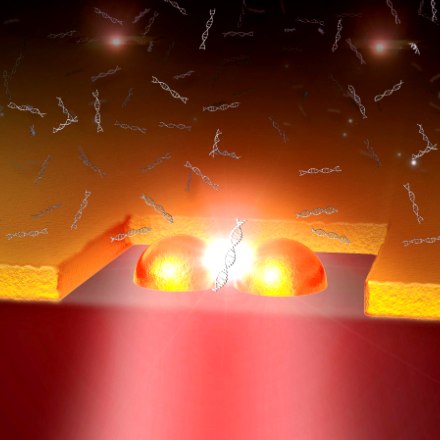Nanotechnologies and Rectenna Rectenna (Nano Telecommunications) PhD in Nano _ Microelectronics
Researcher and author: Dr. ( Afshin Rashid)
Note: When a solar electromagnetic wave hits the surface of a nano-antenna, a time-varying current is generated on the surface of the nano-antenna, resulting in a voltage at the supply gap.
An antenna is a device that can receive electromagnetic waves in space. In order for the antenna to receive a solar electromagnetic wave, the dimensions of the antenna must be on the order of magnitude of the input wavelength to its surface. Visible and ultraviolet include a nanometer-sized antenna. Because the use of optical nano-antennas to collect solar energy offers a practical solution that is more efficient than other common photovoltaic technologies such as solar panels, it has led to the rapid development of nanotechnology and optical materials.
Therefore, by placing a suitable rectifier at the nano antenna power supply gap, the desired DC power is produced. In the Rectenna solar system, millions of nanoantennas are placed side by side with a suitable rectifier , each of which generates electricity separately using sunlight. The conversion of the light energy of the sun absorbed by the antenna is done by a suitable rectifier. Suitable diodes for this frequency range are 12MIMs. This diode must be able to operate at frequencies above 30 terahertz. Schottky diode , a semiconductor diode with low voltage drop and relatively fast response speed , has the ability to rectify and detect signals with a frequency of up to 5 terahertz. MIM diode due to femtosecond tunneling time and increaseSignificant response speed can be used as an alternative to Schottky diode in the infrared and visible frequency range. Because nanoantennas have the ability to absorb a wide angle, their efficiency is significantly maintained even if the sun is inclined to the surface of the solar panel . It could also energy emitted from the Earth, the Earth Radiation caused by Tabshh of Daily Sun to the Earth's surface and the length of the hair towers 10 micrometers , the frequency of about 90 THz occur attract the same reason Nanoantennas of the solar recton system can also generate electricity by collecting this radiation during the night or in bad weather conditions . Currently the diode and antenna structures used in the solar rectum They are made using the electronic design method. Although this method of construction is expensive and time consuming for production on laboratory and research scales , but if these structures are produced in large volumes and with a suitable method , they will reduce the cost and speed of the manufacturing process.
(Nano Rectenna) How to make and applications
The combination of optical antennas with a suitable rectifier system called Rectenna for short has been introduced in recent years to convert solar light energy into electrical energy and is rapidly being developed and researched. While the efficiency of common solar cells on the market is about 30% at best, it yields two to three times that amount for rectangles. It should be noted that Rectenna Rectenna has been studied in recent years, especially in the field of power transmission in the microwave band. For example, in theory, for a single frequency of 9.2 GHz, more than 10% efficiency is predicted . Of course, the practical efficiency of making these devices may be slightly different and must be determined in practice. Dipple antenna with Linear polarization and length 2 / λ, which has a relative bandwidth of 11%, will be able to collect about 75.2 pW . With regard to the low received power independent of each antenna, using an array of antibiotics in these cells is customary laws and its own procedures there.
The antenna device that can be electromagnetic waves in space to receive science appeared solar electromagnetic wave received by the antenna to antenna dimensions on the order of the size of the wavelength of entry-level, so to get the length of the wave solar radiation in the area Includes infrared, visible and ultraviolet. Nanometer-sized antennas are required. Because the use of optical nanoantennas to collect solar energy provides a practical solution with a higher efficiency than other common photovoltaic technologies such as solar panels. Has led to the rapid development of the nanotechnology and optical materials industry.
Conclusion :
When a solar electromagnetic wave hits the surface of a nano-antenna, a time-varying current is generated on the surface of the nano-antenna, resulting in a voltage generated at the point of supply gap.
Researcher and author: Dr. ( Afshin Rashid)
PhD in Nano-Microelectronics






